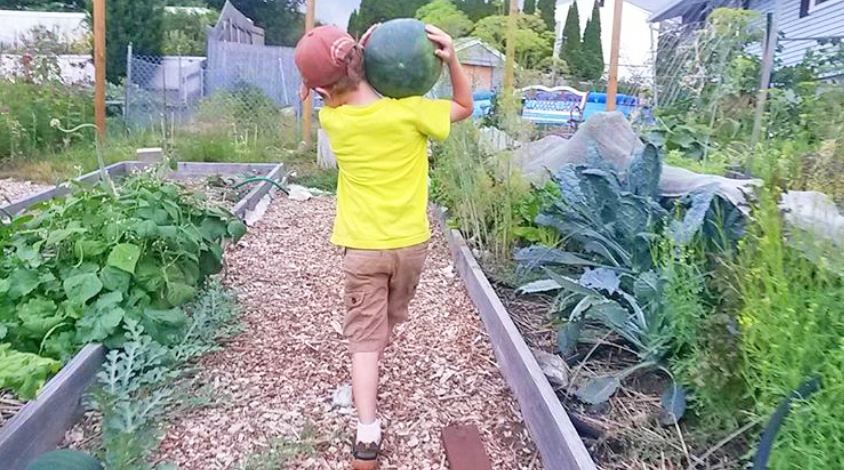
By Robert Burgess
THBG Senior Communications Manager
So you want to plant a garden. Maybe you’re a first timer or maybe you’re returning to a hobby you’ve been away from for awhile. There are literally libraries – including our Library at New England Botanic Garden at Tower Hill – full of information on how to garden. There are experts who teach college courses and life long learning classes – including many at New England Botanic Garden at Tower Hill when we’re open to the public. New England Botanic Garden at Tower Hill also has an amazing Vegetable Garden you’ll want to eventually visit for inspiration.
But what if you want the quick and dirty lowdown on the most basic steps to take in order to grow plants that you’ll be able to eat within the next few months? You’ve come to the right place. I’ve been toiling at my little family homestead, growing by trial and error for a while now. Here are seven things I’ve learned you can do to give yourself the best chance for success.
1) Pick the spot in your yard that gets the most sun, even if that’s in the front yard. Many new gardeners struggle to grow much of anything by tucking their garden plot in a far off corner hidden from their neighbors in the back yard under too much shade. Most annual vegetables need at least eight hours of full sun each day. Put a patio chair where you want your garden bed to go and watch it throughout the day to determine if that spot gets enough sun or falls into the shade for too much of the day.
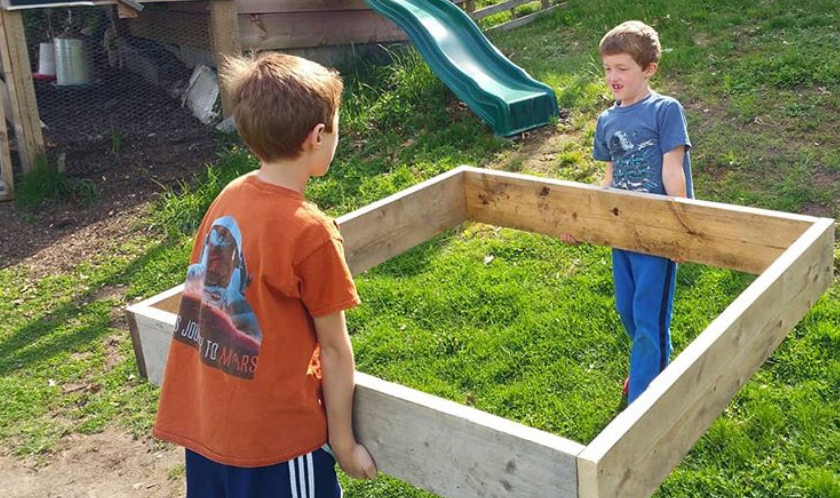
2) Build your garden. It could be a container garden on your porch if your short on space and/or time. My preferred method: Build a 4 foot by 8 foot raised bed and make it 6 to 10 inches tall. You can use rocks, bricks, or untreated wood to form the perimeter. The plants don’t required the raised edge, but I find it’s easiest for new gardeners to define their growing space with walls. It keeps pets and children from stepping in the gardening area, compacting the soil and squishing the plants. And it helps keep weeds from reaching in and taking over your gardening space. It’s also easier on my back!
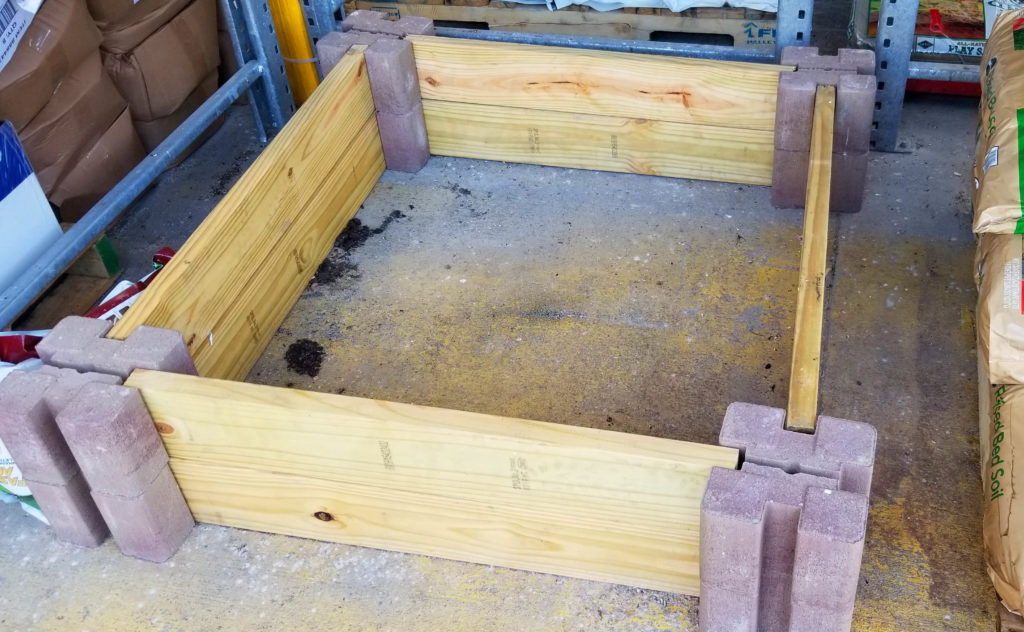
These corner bricks eliminate the need for drills and nails. If you can get your lumber supplier to cut the wood for you, then you don’t even need a saw – a simple tool-free set up!
3) Fill your raised bed with soil. I prefer organic compost – I put my plants straight into that and they grow fast, large, and healthy. Many garden centers now sell bags of raised bed soil and that’s a good option too. Use a rake to even the soil out, but don’t smoosh it down – plants like non-compacted soil for their roots to easily spread through. Most vegetable plants don’t send roots deeper than six inches, so don’t worry about making a super deep garden bed. I also don’t bother putting a barrier at the bottom of my raised beds; the critters I’ve encountered just crawl up the side of the box.

4) Get yourself some seedlings (either grow them yourself or acquire them from your local garden center) and plant them in your garden bed at the end of May or beginning of June (if you live in a similar growing zone to New England Botanic Garden at Tower Hill). The easiest plants to grow, as far as I’m concerned, are summer squash, zucchini, cherry tomatoes, bush beans, Swiss chard, and kale; these plants seem to grow well and produce no matter how much I neglect them. Intermediate level plants would be arugula, carrots, radishes, peppers, eggplant, lettuce, watermelon, and squash. I have never had success with broccoli or spinach, so they go in my difficult to grow category.
5) Water, but don’t over water or under water. The best time to water your garden is early in the morning. (Watering at night can bring pests and diseases.) Water the soil not the leaves. (Wet leaves can encourage disease and even sunburn.) Water deeply. (You want that water to sink down into the soil. Push your finger into the soil; if only the surface dirt is wet you need to water more.) I find a watering wand works best for putting the water exactly where it needs to be.
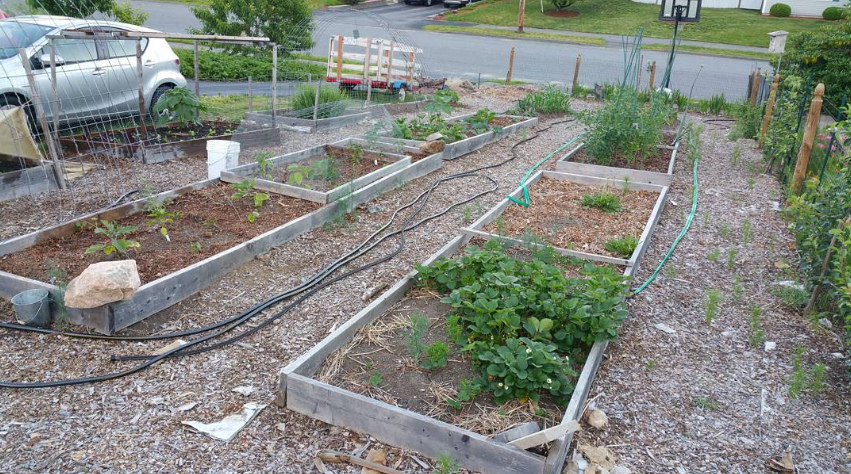
6) Mulch your garden bed. This is very important. Mulch is going to keep weeds down and keep your soil from drying out too quickly. I use shredded leaves from the previous fall and spread a few inches to create a blanket across my garden beds. New England Botanic Garden at Tower Hill uses grass clippings as mulch to great effect in its Vegetable Garden. When I can’t get leaves or grass, I pick up a bail of straw (not hay because it includes seeds) from a local farm (some garden centers sell big cubes of it) and use that for mulch. The point is you don’t want bare soil in a garden you’re growing food in.
7) Grow an organic garden. You’ll be happy, the plants will be happy, the ecosystem will be happy.
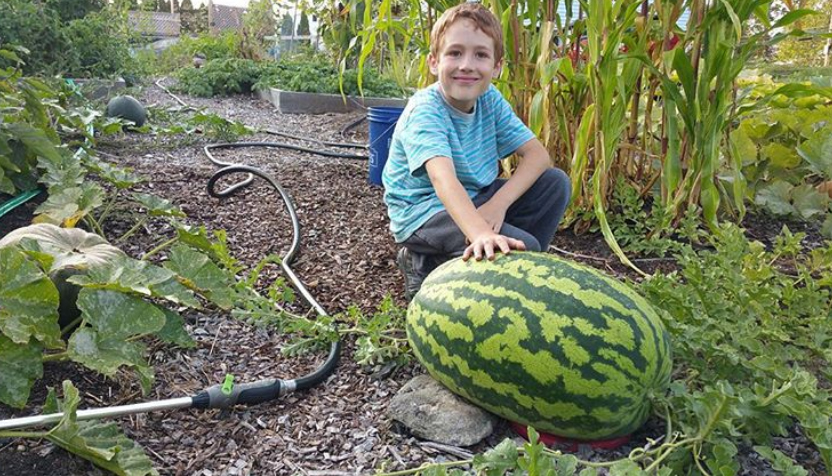
This information above is just the beginning. Each plant has its own specifications, how much sun and water it needs, what kind of spacing it needs. Does it need a stake or support system? You’ll need to learn when to harvest. How to combat pests. What to do with the garden bed at the end of the season. But don’t let these topics overwhelm you. If you follow the steps above, you’re first garden will surely deliver some fresh, tasty produce for you to enjoy this summer.
